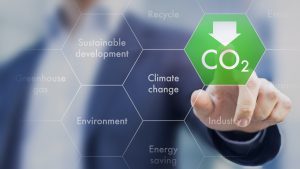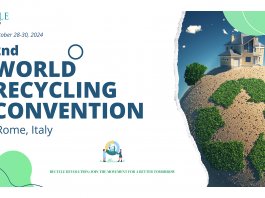Olivier Blum, Executive Vice President of Energy Management at Schneider Electric, discusses how COP28 and Davos 2024 will influence future climate initiatives.
In the wake of two of the most significant global climate summits, the world keenly watches to see what progress nations and businesses will make on climate change this year.
In December, almost 200 countries agreed to begin reducing their consumption of fossil fuels in a ‘first-of-its-kind’ deal. Along with adopting cleaner energy sources, the need to reduce energy demand was high on the agenda for the first time at both events.
But is it enough? Tackling energy demand has the potential to deliver over half (55%) of the solution for net zero energy by 2050, yet it is still vastly under-appreciated.
After taking stock of the panels and discussions at these events with organisations like Bain & Company, EDF, and CCI France UAE, one thing is clear to me. Decision-makers now know we must reduce energy demand to advance faster towards our increasingly urgent climate goals. The question they need answered is, ‘How?’
Here’s what COP28 and Davos 2024 taught us about how to take action this year.
Recognise the true impact of energy demand reduction
The link between the climate and energy crises is undeniable: 80% of global carbon emissions come from producing and consuming energy. While COP28’s flagship agreement is right to encourage transitioning away from fossil fuels, the truth is that, for the most significant and fastest impact to limit climate change, we must completely decarbonise the energy landscape.
COP’s Global Renewables and Energy Efficiency Pledge, which seeks to double the global average rate of energy efficiency improvements from 2 to 4% annually until 2030, is a great idea. But executing it is what matters, through electrifying processes such as transport and heating and reducing energy consumption.
Take buildings, for example. Together with the construction sector, they account for 37% of global carbon emissions – according to the UN Environment Program. It’s simple to reduce building emissions by implementing a microgrid with local renewable energy sources or installing energy management that automatically adjusts heating, cooling, lighting, and more based on need. Just look at the all-digital, all-electric IntenCity building in Grenoble, France, which uses ten times less energy than the average European building.
After attending the WEF meeting in Davos, it was clear to me that the demand side story is accelerating at an incredible pace, and Net Zero buildings are a critical lever for change. The reason for reducing fossil fuel consumption isn’t to power our existing world, where over 60% of energy produced is wasted. It’s to power a more electric and digital world efficiently. At Schneider Electric, we call this Electricity 4.0 – and it’s the fastest way to net zero.
Slash Scope 3 emissions for exponential impact on climate goals
Scope 3 emissions reduction is one of the most significant frontiers of the energy transition. Comprising more than 70% of most companies’ emissions, these come from upstream and downstream in the value chain – I’ve shared more about reducing them here. With Scope 3 a daunting inter-enterprise problem, I was encouraged that The Alliance of CEO Climate Leaders, including Schneider Electric, signed an ambitious action plan at COP28. This promised target setting, pledges to engage all suppliers by 2028, and transparency on all Scope 3 emissions.
Delivery of COP28’s Scope 3 pledges is not possible without digital technologies that make data visible; after all, if you can see it, you can track it. Even the smallest suppliers or customers, who may not have their own sustainability officers, can use technology to measure emissions, build a decarbonization roadmap, and access solution providers. Arming our top 1,000 suppliers with digital solutions has been central to Schneider Electric’s Zero Carbon Project, designed to halve their operational carbon emissions by 2025. Any company can do the same with the right guidance.
At Davos, there was recognition of the impact that reducing Scope 3 can make, not least because regulation is on the horizon. From 2025, companies in Europe will be required to report on their Scope 3 emissions. But the positive impact of Scope 3 emissions reduction is more than the sum of its parts: as suppliers and customers improve, whole ecosystems of connected companies can decarbonise together, offering exponential improvement for a company’s costs, reputation, and supply chain resilience.
Recognise the competitive benefits at the heart of circularity
At COP28 and Davos 2024, circularity was more prominent on the agenda than ever, a positive sign that world leaders recognise its value in mitigating climate change. The Ellen MacArthur Foundation, a pre-eminent organisation in this field, praised the first-ever inclusion of circular economy in COP’s specified outcomes and called for urgency to deliver it to the market at scale as part of the energy transition.
According to the 2024 Circularity Gap Report, the volume of discussions, debates, and articles around circularity has increased nearly threefold in the past five years. This was confirmed to me at Davos, where the transformative potential of circularity came up repeatedly in conversation. Despite more attention to this topic, the global circularity rate has declined from 9.1% in 2018 to 7.2% in 2023, underscoring the need for organisations to act now.
My panel discussion with Bain & Company and Kearney discussed how circularity can be embedded in entire product lifecycles right from the design phase. We must rethink our relationship with energy through a new culture of recycling and refurbishment. I’ve seen the results first-hand: from Arcelor Mittal’s recycled and renewably produced steel that goes into our products and takes 70% less CO₂ to produce, to sensors in systems we design that anticipate wear and tear, prompting the replacement of modules that ultimately keep machines alive for longer.
Companies need to view circularity as an entire ecosystem in order to build a comprehensive, end-to-end strategy. This means engaging customers and partners to use better, use longer, and use again. This was how Schneider Electric was awarded the status of ‘Circularity Lighthouse’ by the World Economic Forum. Through measures such as eco-design, waste-to-resources sites, global network of refurbishment centres, we have helped our customers avoid 513 million tonnes of CO2 since 2018.

If done well, circular models can open new value streams via refurbished programs like our Circular Certified scheme, maintenance services to support the lifecycle of sold equipment, and energy cost savings across the board as we use less energy. After all, investing in energy efficiency is investing in saving.
We must decarbonise the whole energy landscape
To combat climate change, it’s crucial to dramatically reduce the carbon emissions associated with energy production and usage. While COP28 and Davos 2024 delegates have provided the world with a strong blueprint, decision-makers must now take urgent action to decarbonize both energy supply and energy demand, together.
The technology to address this challenge already exists. The solution lies in collectively deploying Electricity 4.0 at scale and with urgency.





